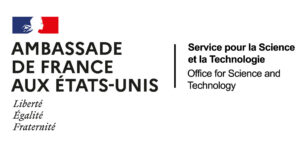san francisco
san francisco
san francisco
san francisco
san francisco
san francisco
san francisco
san francisco
la synapse
la synapse
la synapse
la synapse
la synapse
la synapse
la synapse
la synapse

History
The average per capita income of 145 k$ per year is correlated with a very high cost of living. However, the San Francisco Bay Area’s salary level, which is the highest in the US, remains an attractive factor for talent. The region has three international airports located on both sides and to the south of the bay: San Francisco International Airport (SFO), Oakland International Airport (OAK) and San Jose International Airport (SJC).
General Economy
The Bay Area’s ecosystem is valued at $2T, making it the largest in the world, 5 times larger than that of New York, for example. What’s more, the region benefits from the presence of talent, tech companies and an entrepreneurial culture, which boosts its competitiveness. Since 2014, 15% of patents filed in the United States have been registered in this region. This dynamism and excellence attracts and retains talent from all over the world. The flexibility of the labor market, partly linked to the absence of non-competition clauses in California, allows talent to move from one company to another. In an interview for a BFM business report, Stanford professor Fred Turner summed up this mentality in one sentence: “I don’t work for my company, I work for the Valley”. As a result, the San Francisco Bay Area forms a nebula of talent with extensive interconnections and networks.
Science and Innovation
Innovation and entrepreneurship are an integral part of the curricula and ethos of these institutions. For example, Google was originally a student project at Stanford. As a result, their incubators and accelerators are at the forefront of idea development and fund-raising. At Stanford University, the Launchpad and StartX incubators have facilitated the raising of over $8B; at UC Berkeley, the Skydeck and Blockchain Xcelerator incubators have helped their startups raise nearly $2B.
Accompaniment and Support
The many globally competitive accelerators, incubators and support programs present in the San Francisco Bay Area cannot be listed exhaustively. However, we can mention a few of the best-known, such as Plug and Play Tech Center, Y combinator, 500 Startups, AngelPad, HAX and Launch Accelerator.
Finally, venture capital funds also have a strong presence in the San Francisco Bay Area, grouped together at Sand Hill Road. In fact, in 2021, more than a third of venture capital investments in the United States were made in this region.




